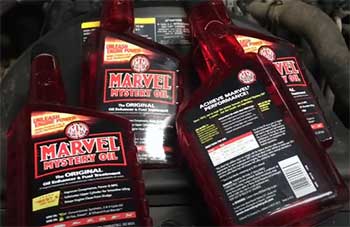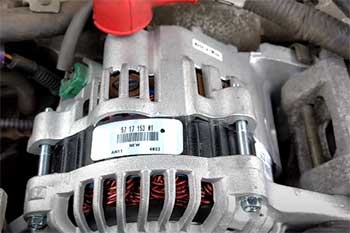I’m not one to hype up products without good reason, but let me tell you, an Odyssey battery is a game-changer for anyone who values reliability and power in their vehicle. Whether you’re driving a rugged off-road Jeep, a marine vessel, or just your daily commuter, these batteries pack a punch that’s hard to beat.
With their reputation for durability and performance, I’m confident you’ll find an Odyssey battery worth your investment. Let’s walk through my experience, the pros, the not-so-great parts, maintenance tips, and how they stack up against other brands to see why they’re a top pick.
My Journey With Odyssey Batteries
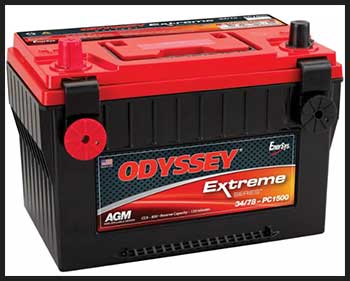
A couple of years ago, I was fed up with my old battery giving out on me during the worst possible moments—like that freezing morning when my Jeep refused to start before a camping trip.
I’d heard about Odyssey batteries from a buddy who swears by them for his off-road rig, so I decided to give the Odyssey 34/78-PC1500DT a shot.
Let me tell you, it was like upgrading from a flip phone to a smartphone.
The first thing I noticed was the cranking power.
My Jeep fired up instantly, even in sub-zero temps, which was a far cry from the sluggish starts I was used to.
I installed the battery in my 2015 Jeep Wrangler, which I use for both daily driving and weekend adventures in the mountains. The Odyssey handled everything I threw at it: winching, running my aftermarket stereo, and powering a fridge for those long trips. I’ve had it for three years now, and it’s still going strong, with no signs of slowing down.
I even tested its deep-cycle capabilities during a week-long off-grid trip, where it powered my gear without needing a recharge. The peace of mind knowing I wouldn’t be stranded in the middle of nowhere was worth every penny.
What really sold me was how it handled extreme conditions. I live in a place where winters dip below zero and summers hit triple digits. Most batteries would’ve buckled, but this one just kept chugging along. I also appreciated the sealed design—no messing with water levels or worrying about spills when I’m bouncing over rocky trails.
My experience isn’t unique; I’ve talked to other off-roaders and boaters who’ve had similar results, with some saying their Odyssey batteries lasted over a decade. That said, I’ve also heard grumbles about warranty issues and cost, which I’ll get into later. But for now, let’s just say this battery has earned its spot under my hood.
The Pros of Odyssey Batteries
- Unmatched Cranking Power
You know that heart-sinking moment when you turn the key and your engine just groans? With an Odyssey battery, that’s a thing of the past. These batteries use Thin Plate Pure Lead (TPPL) technology, which means they pack 99% pure lead plates—way more than your average battery.
More plates equal more surface area, which translates to cranking power that can hit up to 2700 amps for five seconds. I’ve started my Jeep in -20°F weather without a hiccup, and that kind of reliability is a lifesaver when you’re far from civilization.
- Longevity That Saves You Money
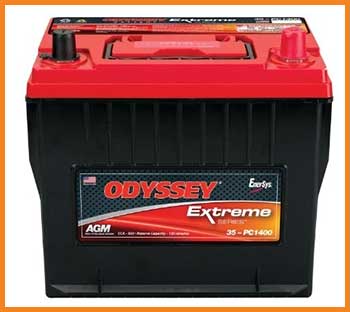
I’ll be honest—spending $300+ on a battery made me wince at first.
But when you consider that Odyssey batteries can last 6 to 12 years with proper care, it’s a solid investment.
My buddy’s 15-year-old Odyssey in his classic car still holds a charge like a champ.
Compared to cheaper batteries that die every three years, the math checks out.
You’re not just buying a battery; you’re buying years of worry-free starts.
- Maintenance-Free Design
If you’re like me, you don’t have time to babysit your battery. Odyssey’s AGM (Absorbent Glass Mat) design is sealed, spill-proof, and doesn’t require you to top off water or check acid levels. I’ve mounted mine sideways for better fitment in my Jeep’s tight battery tray, and I’ve never had a leak or corrosion issue.
It’s a set-it-and-forget-it kind of deal, which is perfect for someone who’d rather be driving than tinkering.
- Extreme Condition Performance
Whether you’re battling arctic chills or desert heat, Odyssey batteries are built to take it. They operate flawlessly from -40°F to 140°F (or up to 176°F with a metal jacket). I’ve driven through scorching Arizona summers and icy Colorado winters, and my battery never flinched.
This makes them ideal for off-roaders, boaters, or anyone who pushes their vehicle to the limit.
- Vibration Resistance for Rough Rides
If you’ve ever taken a vehicle off-road, you know how much abuse your gear takes. Odyssey batteries are built to withstand high-impact shocks and vibrations, which is why they’re a favorite for powersports and marine applications.
I’ve bounced over rocky trails and never worried about my battery rattling loose or failing. That durability gives me confidence when I’m miles from the nearest mechanic.
The Not-So-Good Parts of Odyssey Batteries
- High Upfront Cost
Let’s not sugarcoat it—Odyssey batteries aren’t cheap. My 34/78-PC1500DT set me back about $320, and some models can hit $600. For comparison, a decent Walmart battery might cost $140. If you’re on a tight budget, that price tag can sting.
I justified it by thinking long-term, but it’s still a hurdle for some folks. You have to decide if the longevity and performance are worth the initial hit to your wallet.
- Warranty Woes
I’ve heard mixed stories about Odyssey’s warranty process, and it’s something you should know about. The typical warranty is 3-4 years, which sounds great, but some users, including a few on Reddit, have complained about Odyssey denying claims for silly reasons, like low voltage (which, duh, is why you’re filing a claim).
I haven’t had to test their warranty myself, but it’s worth buying from an authorized dealer to avoid headaches. Amazon purchases, for example, might not be covered, which burned a few folks I know.
- Limited Availability
Finding an Odyssey battery can be a pain depending on where you live. Not every auto parts store carries them, and some models are harder to track down than others. I had to order mine online from an authorized dealer, which added a couple of days to the process.
If you need a battery ASAP, this could be a hassle compared to grabbing a DieHard or Interstate at your local shop.
- Specific Charging Needs
Odyssey batteries are picky about chargers. They need a float charge between 13.5 and 13.8 volts, and not all chargers (like my old Battery Tender Jr.) can handle that. I had to invest in a CTEK charger to keep my battery happy, which added about $100 to the cost.
If you don’t use the right charger, you risk shortening the battery’s life, which is a bummer for something that’s supposed to be low-maintenance.
- Heavier Than Some Alternatives
While Odyssey batteries are compact for their power, they’re not exactly lightweight. My 34/78-PC1500DT weighs about 50 pounds, which is heavier than some lithium options.
For most vehicles, this isn’t a big deal, but if you’re trying to shave weight for racing or fuel efficiency, it’s something to consider. I didn’t mind the extra heft in my Jeep, but it could matter for lighter vehicles.
Maintenance Tips For Your Odyssey Battery
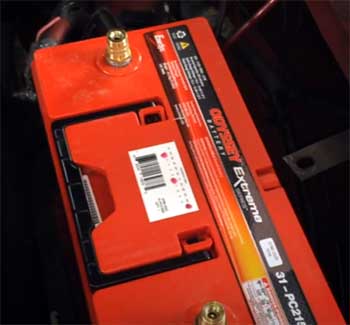
- Use the Right Charger: To keep your Odyssey battery in top shape, invest in a charger that meets its specific needs. Odyssey recommends a float charge of 13.5-13.8 volts, so skip the generic chargers. I use a CTEK MXS 5.0, and it’s been perfect for maintaining my battery during long periods of inactivity. Check the charger’s AGM setting to ensure it’s compatible, and avoid overcharging, which can damage the plates.
- Keep Terminals Clean: Corrosion on battery terminals is the enemy of performance. Every few months, I pop the hood and check for any buildup. A simple mix of baking soda and water with a wire brush does the trick. I’ve also used a bit of Coke in a pinch—works like a charm, just rinse it off afterward. Clean terminals ensure a solid connection and keep your battery cranking strong.
- Store Properly When Not in Use: If your vehicle sits for months (like my buddy’s classic car during winter), store your Odyssey battery at 77°F to minimize self-discharge. It can hold a charge for up to two years, but I check the voltage every few months. If it drops to 12.0 volts (35% state of charge), recharge it immediately to avoid permanent damage. A trickle charger or disconnecting the terminals works wonders.
- Tighten Connections Regularly: Loose connections can cause voltage drops and poor performance. I make it a habit to check the terminals every oil change (about every 5,000 miles). A quick wiggle and a turn of the wrench ensure everything’s snug. This is especially important if you’re off-roading, where vibrations can loosen things up over time.
- Avoid Deep Discharges: While Odyssey batteries handle deep cycling better than most, you’ll extend their life by avoiding full discharges. I try to keep mine above 50% charge, especially during heavy use like winching or running accessories. If you’re using it for deep-cycle applications, recharge as soon as possible after use to prevent sulfation.
How Odyssey Stacks Up Against Other Brands?
I’ve put my Odyssey battery through its paces, but how does it stack up against other heavy hitters like Optima, Deka, and LiTime? I’ve looked at these brands closely, comparing them on key factors like performance, durability, cost, and usability to help you decide what’s best for your ride.
- Odyssey Vs. Optima: Power and Reliability
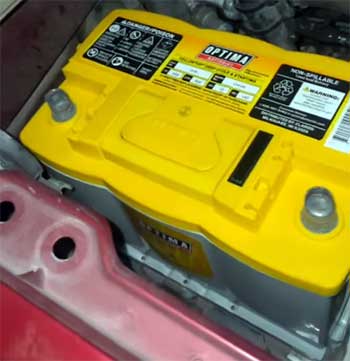
Optima batteries, especially the RedTop and YellowTop, are a go-to for many gearheads, and I get why—they’re solid.
My Odyssey 34/78-PC1500DT pumps out 850 CCA (Cold Cranking Amps), while Optima’s comparable D34 offers 750 CCA.
That extra 100 CCA makes a difference when you’re starting a V8 in freezing temps.
Odyssey’s Thin Plate Pure Lead (TPPL) tech gives it a slight edge in longevity, with users reporting 6-12 years compared to Optima’s 6-10.
However, Optima’s Spiral Cell design is no slouch, offering great vibration resistance for off-roaders like me.
The kicker?
Optima’s about $100 cheaper (around $220 vs. $320 for my Odyssey). If budget’s tight, Optima’s tempting, but I trust Odyssey more for extreme conditions after hearing about Optima’s quality dips post-Mexico production.
- Odyssey Vs. Deka: Durability and Accessibility
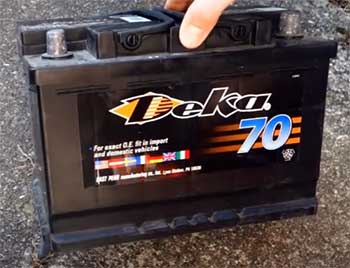
Deka batteries, made by East Penn Manufacturing, are a favorite for their affordability and availability.
I’ve used a Deka AGM in an old truck, and it held up fine for daily driving, costing about $180.
Deka’s Intimidator series offers decent cranking power (around 775 CCA for a comparable model), but it doesn’t match Odyssey’s 850 CCA or its ability to handle deep cycling for accessories like winches.
Deka’s lifespan is typically 5-8 years, shorter than Odyssey’s 6-12.
You’ll find Deka at most auto parts stores, unlike Odyssey, which I had to order online. For casual drivers, Deka’s a reliable pick, but Odyssey’s durability wins for my off-road adventures.
- Odyssey Vs. LiTime: Weight and Technology
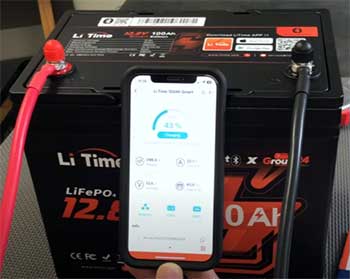
LiTime’s lithium batteries are the new hotness, and I was curious about their 100Ah models for my Jeep.
At just 23 pounds compared to my Odyssey’s 50, LiTime’s a dream for weight-conscious builds like race cars.
They also boast a lifespan of 10-15 years and handle deep cycling like champs.
But here’s the rub: LiTime’s $400-$600 price tag dwarfs Odyssey’s $320, and you need a lithium-specific charger (another $100+).
Plus, lithium batteries can be risky—if damaged, they might catch fire, which scares me for off-road trips. Odyssey’s AGM tech is safer and more affordable, making it my choice for now, though LiTime’s tempting for lightweight applications.
- Odyssey Vs. the Field: Overall Value
Across the board, Odyssey stands out for its balance of power, durability, and versatility. Optima’s cheaper and widely available, but its performance lags slightly. Deka’s great for budget-conscious drivers but falls short in extreme conditions. LiTime’s lithium tech is cutting-edge but pricey and riskier.
For my Jeep, which sees everything from desert heat to snowy trails, Odyssey’s reliability and 3-4 year warranty (despite some claim hassles) make it the winner. Your needs—budget, vehicle type, or usage—will tip the scales, but Odyssey’s my ride-or-die for demanding applications.
Frequently Asked Questions (FAQ)
Absolutely, Odyssey makes some of the best batteries out there. Their TPPL technology delivers unmatched cranking power and longevity, often lasting 6-12 years with proper care. I’ve had zero issues with mine in three years of heavy use, and many users report similar reliability. That said, the high cost and occasional warranty complaints are worth noting.
Odyssey batteries are manufactured by EnerSys, a global leader in energy storage solutions. Based in the USA, EnerSys has a reputation for quality and innovation, which is why Odyssey batteries are trusted for automotive, marine, and powersports applications. I reached out to their support once, and they were quick to respond with helpful info.
With proper care, Odyssey batteries typically last 6-12 years, depending on usage and conditions. My three-year-old battery is still going strong, and I’ve heard of some lasting 15 years in less demanding setups. Regular charging and avoiding deep discharges are key to maximizing lifespan.
In my experience, Odyssey edges out Optima. Odyssey’s TPPL technology offers higher CCA (e.g., 850 vs. 750 for comparable models) and slightly longer life (up to 12 years vs. Optima’s 6-10). Optima’s cheaper and more widely available, but Odyssey’s reliability in extreme conditions makes it my pick for demanding applications.
Why Odyssey Batteries Are Worth It?
After three years with my Odyssey battery, I can say it’s one of the best investments I’ve made for my Jeep. The cranking power, durability, and maintenance-free design make it a no-brainer for anyone who needs a battery that can keep up with tough conditions.
Sure, the cost and charger requirements might give you pause, but the long-term reliability is hard to beat. If you’re tired of replacing batteries every few years, grab an Odyssey—you won’t regret it.
